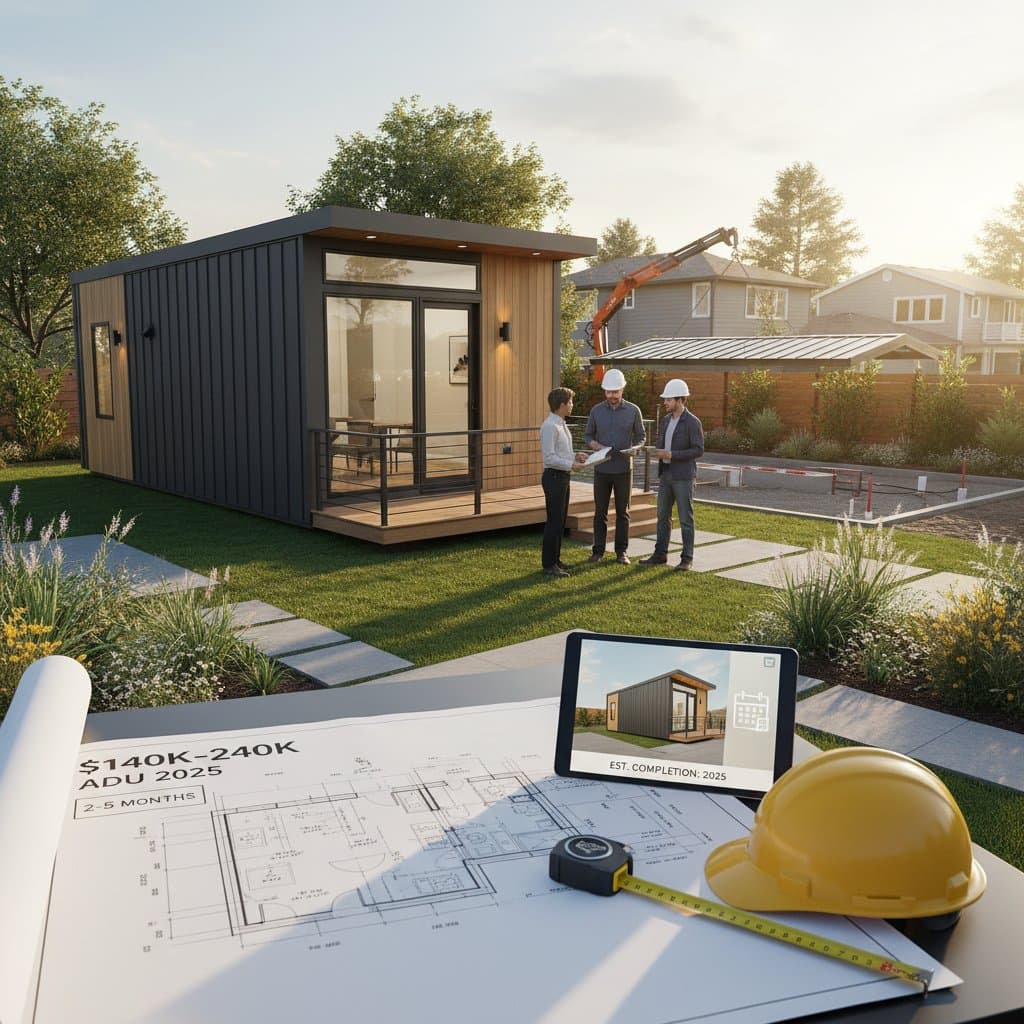Understanding ADUs and Their Appeal
Accessory Dwelling Units, or ADUs, represent versatile additions to residential properties. These structures serve multiple purposes, from housing family members to generating rental income. As urban density increases and housing needs evolve, ADUs emerge as practical solutions for homeowners seeking to maximize space without extensive renovations.
In 2025, the demand for ADUs continues to rise, driven by affordability challenges and zoning reforms. Homeowners evaluate options based on budget, timeline, and long-term value. This guide compares prefab and custom ADUs, highlighting cost savings, construction processes, and decision-making factors.
Prefab ADUs: Efficiency and Affordability
Prefab ADUs involve factory-built modules assembled on-site. Manufacturers construct components in controlled environments, ensuring quality and precision. This approach minimizes weather-related delays and labor variability.
Typical prefab models range from studios to two-bedroom units, sized between 400 and 1,200 square feet. Installation requires a prepared foundation and utility connections. Homeowners appreciate the streamlined process, which often completes in weeks rather than months.
Cost Breakdown for Prefab
Prefab ADUs average $240,000 for a complete project. This figure includes the base unit at $150,000 to $200,000, plus site work estimated at $40,000. Permits and utility hookups add $20,000 to $30,000, depending on local regulations.
Materials emphasize durability, such as steel framing and insulated panels. Energy-efficient features, like solar-ready roofing, enhance appeal without inflating costs. Compared to traditional methods, prefab reduces waste and labor by 30 percent.
Custom ADUs: Tailored Design and Flexibility
Custom ADUs allow homeowners to dictate every detail, from layout to finishes. Architects and builders collaborate to create unique structures that integrate seamlessly with existing homes. This personalization suits specific lifestyles or aesthetic preferences.
Construction occurs entirely on-site, enabling adjustments during the build. Sizes vary widely, often exceeding 1,000 square feet for multi-room configurations. The process demands skilled tradespeople and extended oversight.
Cost Breakdown for Custom
Custom ADUs typically cost $340,000, reflecting bespoke elements. Design fees range from $20,000 to $50,000, while materials and labor account for $200,000 to $250,000. Site preparation and permits mirror prefab expenses but escalate with complexity.
High-end choices, such as custom cabinetry or smart home systems, drive premiums. Owners invest in longevity, with reinforced foundations supporting future expansions. The $100,000 difference stems from on-site fabrication and iterative changes.
Key Differences: Build Times and Processes
Prefab ADUs excel in speed, with factory production taking 4 to 6 weeks and on-site assembly adding 2 to 4 weeks. Total timelines rarely exceed three months. This efficiency suits urgent needs, like accommodating aging parents.
Custom builds extend to 6 to 12 months, incorporating planning, approvals, and phased construction. Delays arise from supply chains or design revisions. For time-sensitive projects, prefab offers a clear advantage.
Both require site assessments for soil stability and utility access. Prefab demands precise foundation work to align modules, while custom allows adaptive grading. Local codes influence timelines, particularly in seismic zones.
Pros and Cons of Each Approach
Advantages of Prefab ADUs
- Lower upfront costs enable broader accessibility.
- Shorter timelines reduce financing burdens.
- Consistent quality from standardized manufacturing.
- Eco-friendly practices lower the carbon footprint.
Drawbacks of Prefab ADUs
- Limited customization restricts unique designs.
- Transportation challenges for remote sites.
- Potential resale concerns if styles feel generic.
Advantages of Custom ADUs
- Full personalization matches exact requirements.
- Higher property value through tailored features.
- Flexible scaling for future modifications.
- Enhanced integration with home architecture.
Drawbacks of Custom ADUs
- Elevated costs strain budgets.
- Longer waits increase uncertainty.
- Greater risk of overruns from changes.
2025 Pricing Trends and ROI Considerations
Projections for 2025 indicate stable prefab costs, with slight increases from material inflation. Custom prices may rise 5 to 10 percent due to labor shortages. Regional variations apply; coastal areas command premiums for compliance.
Return on investment favors ADUs in high-demand markets. Rental yields average 5 to 8 percent annually, recouping costs in 10 to 15 years. Prefab units appeal to short-term renters, while custom designs attract long-term tenants.
Tax incentives, such as energy credits, boost viability. Homeowners calculate ROI by assessing local rents and appreciation rates. Consulting financial advisors ensures alignment with personal goals.
Steps to Plan Your ADU Project
Start with a property evaluation to confirm zoning eligibility. Engage professionals for feasibility studies, focusing on utilities and setbacks. Budget allocation covers 10 percent contingency for surprises.
Select prefab for efficiency or custom for uniqueness based on priorities. Review manufacturer portfolios or architect references. Secure financing early, exploring home equity loans or grants.
Obtain permits through local planning departments, submitting detailed plans. Monitor progress with regular site visits. Post-completion, consider insurance updates and maintenance schedules.
Maximizing Value from Your ADU Choice
Whether opting for prefab savings or custom distinction, ADUs enhance property utility. Evaluate needs against benefits to avoid regrets. Strategic planning positions homeowners for sustained advantages in evolving real estate landscapes.









